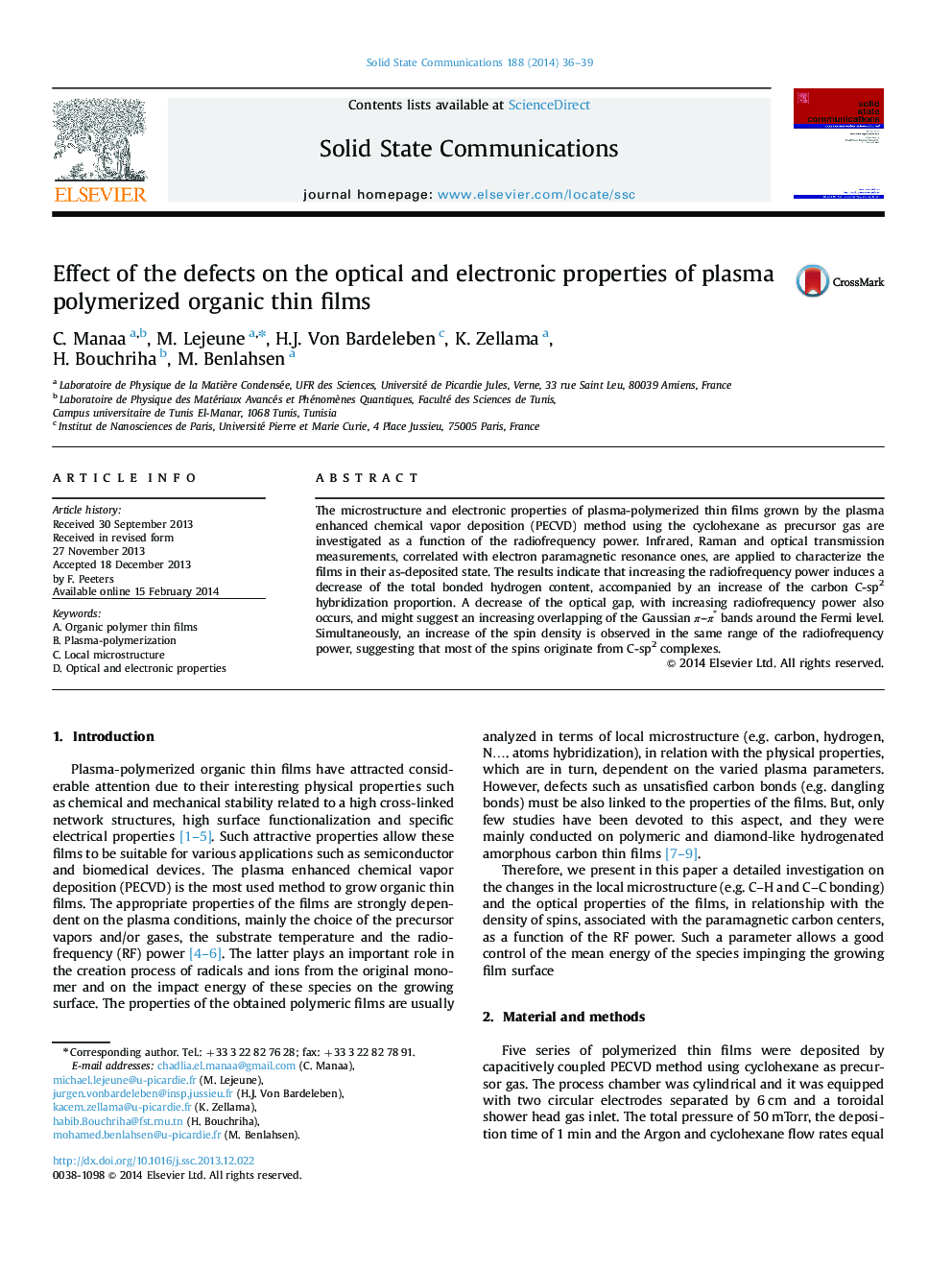| Article ID | Journal | Published Year | Pages | File Type |
|---|---|---|---|---|
| 1591929 | Solid State Communications | 2014 | 4 Pages |
•Plasma polymerized thin films were grown by the PECVD using the cyclohexane as precursor.•The analysis reveals a highly disordered material.•A transition from a pure Csp3 precursor to a mainly Csp2 layer is observed.•Csp2 structures show a density of defects (with presence of odd rings).
The microstructure and electronic properties of plasma-polymerized thin films grown by the plasma enhanced chemical vapor deposition (PECVD) method using the cyclohexane as precursor gas are investigated as a function of the radiofrequency power. Infrared, Raman and optical transmission measurements, correlated with electron paramagnetic resonance ones, are applied to characterize the films in their as-deposited state. The results indicate that increasing the radiofrequency power induces a decrease of the total bonded hydrogen content, accompanied by an increase of the carbon C-sp2 hybridization proportion. A decrease of the optical gap, with increasing radiofrequency power also occurs, and might suggest an increasing overlapping of the Gaussian π–π* bands around the Fermi level. Simultaneously, an increase of the spin density is observed in the same range of the radiofrequency power, suggesting that most of the spins originate from C-sp2 complexes.
